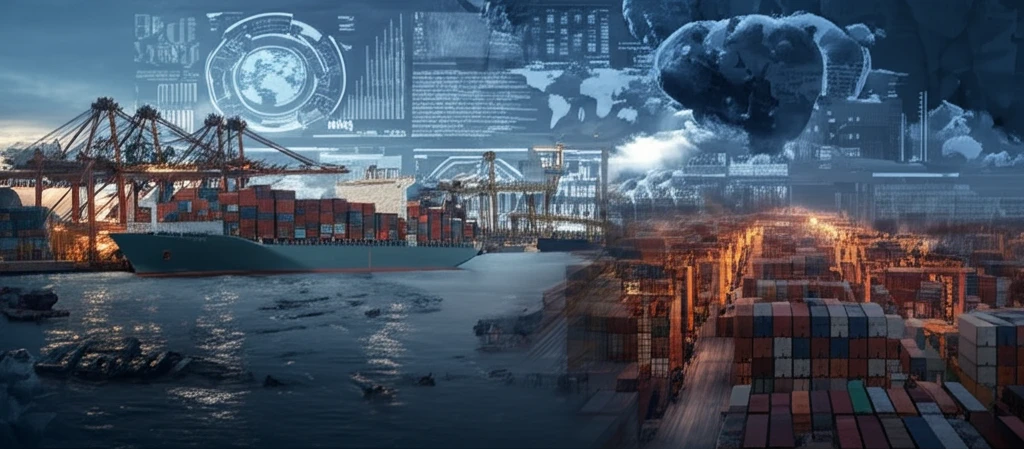
Navigate the Future: How Port Simulation Models are Revolutionizing Maritime Safety and Efficiency
"Discover how cutting-edge simulation technology is reshaping port operations, making them safer, more efficient, and ready for tomorrow's challenges."
Globalization has dramatically increased maritime transport, leading to larger vessels and higher traffic volumes. Ports, often constrained by inflexible infrastructures, face the challenge of accommodating this growth without compromising safety or efficiency. The rise in vessel movements has made vessel navigation related processes critical for port performance.
Maritime transportation simulation models have emerged as essential tools for optimizing port operations and assessing performance. These models allow port authorities and planners to evaluate different scenarios, identify potential bottlenecks, and implement strategies to improve safety and capacity. From simulating vessel traffic in straits to assessing maritime risks, these models offer valuable insights into complex port environments.
This article explores the state-of-the-art in port simulation models, focusing on their application for risk and capacity assessment. By examining various models and their capabilities, we aim to provide a comprehensive overview of how these technologies are shaping the future of maritime navigation. We delve into the key navigational processes, infrastructure considerations, and simulation techniques that are driving innovation in port management.
Decoding Port Simulation Models: A Comprehensive Guide

Ports are intricate networks where seamless coordination is crucial. Port simulation models aim to replicate the complex interactions between vessels, infrastructure, and operational processes to enhance safety and efficiency. These models consider a wide array of factors, from vessel arrival patterns to the impact of weather conditions.
- Nautical Infrastructure: The model should include all relevant parts of the port infrastructure, such as channels, inner basins, manoeuvring areas, and berths.
- Anchorage: Accurate modeling of anchorage areas is crucial, considering factors like vessel allocation and waiting times.
- Berthing Processes: The simulation should realistically represent berthing times and manoeuvring, as these can significantly impact port efficiency.
- Terminal Operations: While not always detailed, terminal operations must be included to provide a complete picture of port activities.
- Tug and Pilot Assistance: Restrictions on navigation and the availability of tugs and pilots play a vital role in ensuring safe vessel movements.
- Traffic Rules: Adherence to international and port-specific traffic rules must be incorporated to simulate realistic navigation scenarios.
Charting the Course for Future Port Simulations
The assessment reveals that current port simulation models still have room for improvement in accurately representing vessel navigation and assessing capacity and risk. Future models should prioritize detailed infrastructure, explicit tug and pilot assistance, and comprehensive traffic rules. Leveraging AIS data and incorporating human behavior models will further enhance the realism and reliability of these simulations. By embracing these advancements, port stakeholders can unlock new levels of safety, efficiency, and resilience in the face of growing global trade demands. The future of maritime navigation depends on our ability to simulate and optimize port operations for a safer, more efficient tomorrow.
